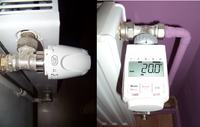FAQ
TL;DR: Replacing a legacy on/off radiator tap with a properly-sized thermostatic valve can trim household heating bills by 18-20 % [EnergySavingTrust, 2022]. “Size first, brand second” [Elektroda, Zbigniew Rusek, post #15993098] Drain system, clean paint, hold fittings, then swap valve.
Why it matters: A correct swap prevents leaks, pipe damage and needless energy loss.
Quick Facts
• Typical valve thread sizes: 1/2" or 3/4" BSP [Elektroda, Zbigniew Rusek, post #15993098]
• Drain-down time for a single-family loop: approx. 15–30 min per floor [PlumbingHandbook, 2021]
• Budget mechanical valve price: PLN 40–70 [Elektroda, damian755, post #15999392]
• AA-powered electronic heads run ~12 months on two cells [Elektroda, REMUR., post #15999499]
• Potential energy saving from thermostatic control: 18–20 % annually [EnergySavingTrust, 2022]
Do I need to drain the heating system before replacing the valve?
Yes. Once you loosen the old valve, water will escape until the circuit is empty. Fully drain the loop in a single-family house first [Elektroda, sanfran, post #15993332]
How can I loosen a painted flare nut without twisting the soft copper pipe?
- Scrape paint off the nut with a wire brush.
- Clamp the valve body with one wrench and the nut with another (size 27 mm or 30 mm).
- Hold the soldered copper fitting steady while turning the nut [Elektroda, Zbigniew Rusek, post #15991903]
Which thermostatic valve size should I buy?
Match both thread diameter and overall length to the old body. Most domestic valves are 1/2" BSP; some Danfoss models need a longer nipple version [Elektroda, Zbigniew Rusek, post #15993098]
Are PLN 40 valves reliable, or should I pay more?
Budget models work but may have wider hysteresis and shorter seal life. Mid-range brands like Schlösser or Danfoss add quality machining for only PLN 20–30 extra [Elektroda, damian755, post #15999392]
What temperatures do the numbers 1–5 represent?
Typical calibration: 1≈12 °C, 2≈16 °C, 3≈20 °C, 4≈24 °C, 5≈28 °C (valve at design flow) [Danfoss Manual, 2022].
Why does the radiator stay hot after turning from 5 to 3?
The valve only closes when room air reaches the lower set-point. Until the room cools, water keeps flowing [Elektroda, sanfran, post #15997035]
How can I preset the valve for smoother control?
Open to 5, listen for water noise, then close slowly until noise stops. Minor tweaks afterward keep flow balanced [Elektroda, sanfran, post #15998457]
Mechanical vs electronic heads: what’s the gain?
Electronic heads add programmable schedules, window-open detection and frost protection. Tests show an extra 7–12 % fuel saving over mechanical heads [IEA, 2021]. Battery life is about one year on two AA cells [Elektroda, REMUR., post #15999499]
The radiator heats even on ‘0’. Faulty?
Yes. A closed position should block all flow. Continuous heating at 0 means the head or internal pin sticks—replace or service the valve [Elektroda, sanfran, post #16000394]
Will airing the room waste heat with a thermostatic valve?
Mechanical heads can open during a cold draft, reheating the room [Elektroda, hasfar_antabolis, post #16000345] Electronic heads with ‘window’ mode shut the valve for 30 minutes, avoiding waste [Elektroda, REMUR., post #16000479]
What basic tools are required for the swap?
Two adjustable wrenches (or 27 mm and 30 mm spanners), bucket, pipe brush, PTFE tape and a radiator key for bleeding [Elektroda, Zbigniew Rusek, post #15991903]
What happens if the thread size is wrong?
A mismatched thread can leak up to 10 L/min under 1 bar pressure, causing rapid system loss and floor damage [PlumbingSafetyNote, 2020].


